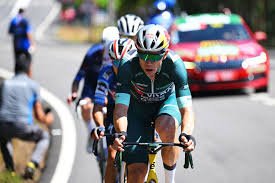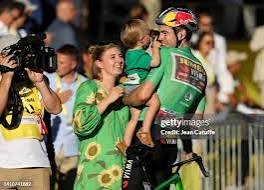
Little Understanding for Van Aert’s Race Program Choice: “I Think You Should Always Do San Remo, Flanders, and Roubaix”
In a world where cycling’s elite athletes often have their schedules meticulously planned to optimize performance and endurance, Wout Van Aert’s recent comments concerning his race program have sparked both intrigue and debate within the cycling community. Known for his versatility and exceptional talent, the Belgian cyclist has been at the forefront of conversations surrounding race strategy and the grueling demands of the sport.
The 28-year-old rider, who has shown prowess in various terrains and race formats, recently expressed a compelling argument during a press conference regarding the importance of participating in the prestigious cycling races of Milan-San Remo, the Tour of Flanders, and Paris-Roubaix. These events, often referred to as the ‘Monuments’ of cycling, are not just critical historical races; they are benchmarks where legends are made, and championships earned.
“I think you should always do San Remo, Flanders, and Roubaix,” Van Aert stated confidently, underlining the significance of these races in a professional cyclist’s career. His assertion, however, is met with questions from analysts and fans alike, raising an important dialogue about the balancing act of race participation and optimizing performance.
#### The Monuments in Focus
Milan-San Remo, known for its long distance and the iconic climbs such as the Poggio di Sanremo, is typically viewed as a rite of passage for sprinters and puncheurs alike. The race, often characterized by its unpredictable weather and tactical complexity, has seen many champions emerge, but also many contenders falter.
In contrast, the Tour of Flanders presents a different challenge. Renowned for its cobbled climbs and harsh terrain, this race punishes riders with its brutal ascents and unpredictable conditions. The race is often seen as testing not just physical attributes but also tactical intelligence and mental resilience.
Then there’s Paris-Roubaix, fondly dubbed “The Hell of the North,” which takes riders through treacherous cobbled sectors. Victory here is often a testament to sheer grit and determination. The race embodies the core spirit of cycling, where not just speed but also strategy and endurance are key components to success.
By emphasizing the importance of these races, Van Aert is suggesting that participation in such legendary events is critical for a rider’s growth and prestige within the sport. “Each of these races tests different aspects of our abilities,” he explained. “Competing in all three can only make you a better cyclist.”
#### A Deeper Understanding of Race Strategy
Cycling is a sport shaped by personal and team dynamics. Decisions regarding which races to prioritize are often based on a multitude of factors including physical fitness, team strategy, and the competitive landscape. While many champions have found success specializing in specific disciplines – whether it be stage races, one-day races, or time trials – Van Aert’s ambitions span across multiple formats, leading to a more intricate dialogue around optimal race programming.
“My goal is to compete in some of the most challenging races and to push my limits continuously,” he remarked, recognizing that his aspirations go beyond mere participation. Each race represents an opportunity to gauge his growth, test his strategies, and build rivalries that could ultimately shape the future of cycling.
However, some experts warn against overcommitting to these major events. The physical toll that racing in quick succession can take is significant, causing fatigue and potential injury. Previous athletes have faced declines in performance when participating in back-to-back-to-back races, particularly when tackling the pressures and demands of the cycling calendar.
#### The Future of Van Aert
Looking ahead, Van Aert’s comments compel both reflection and conversation. As cycling’s landscape continues to evolve with changing dynamics in team strategies, athlete training, and competitive tactics, the relevance of participating in the Monuments remains an ongoing debate.
For a rider of his caliber, the victories in these flagship races could solidify his legacy and status among the greats of the sport. However, he also acknowledges the inherent risks involved. The need to listen to one’s body, to assess recovery times, and to understand one’s competitive edge are critical elements that can never be overlooked.
Van Aert’s discourse invites the cycling community to consider the nuances of racing structures and the pivotal choices that athletes must make. “It’s about mastering your body, understanding your limits, and finding that balance between competition and recovery,” he elaborated.
As the cycling season progresses and we witness Van Aert in action, fans and analysts alike will observe with interest how his participation in these Monuments and his overarching race strategy will play out. Each kilometer ridden will reflect not just his skills but the considerable weight of expectations and a performance strategy aimed at crafting a future where he has solidified his place in cycling’s illustrious history.
With the monumental races approaching rapidly on the calendar, the eyes of the cycling world will undoubtedly be upon Wout Van Aert as he endeavors to tackle the challenges that lie ahead, embodying the relentless spirit of a champion.


